💡 Our AI assistant (bottom-right chat box) doesn’t just support your eye exam and glasses-making process — it can also answer any question you have about our products and services.
🎁 Genuine Products at Competitive Prices:
Thanks to our fully optimized costs and highly efficient automated machinery — with the accuracy of two expert optical shops in one — we eliminate all risk-related costs. That’s why we offer the best price for the highest quality.
🎁 Transparency You Can Trust:
You can personally verify every product via QR code and seal check, and observe the full eye exam and lens-cutting process right at our shop.
🎁 Free Eye Exam & Lens Cutting — International Standards:
Enjoy a 12-step eye exam and 8-step advanced French lens-cutting process, all free of charge.
🎁 Easy to Reach:
📍 Mat Kinh Dien Bien Phu – 529, 3/2 Street, Ward 9, District 10
With our 100% automated system, crafting a high-quality, premium pair of glasses in just 15 minutes is not just possible — it’s our standard.

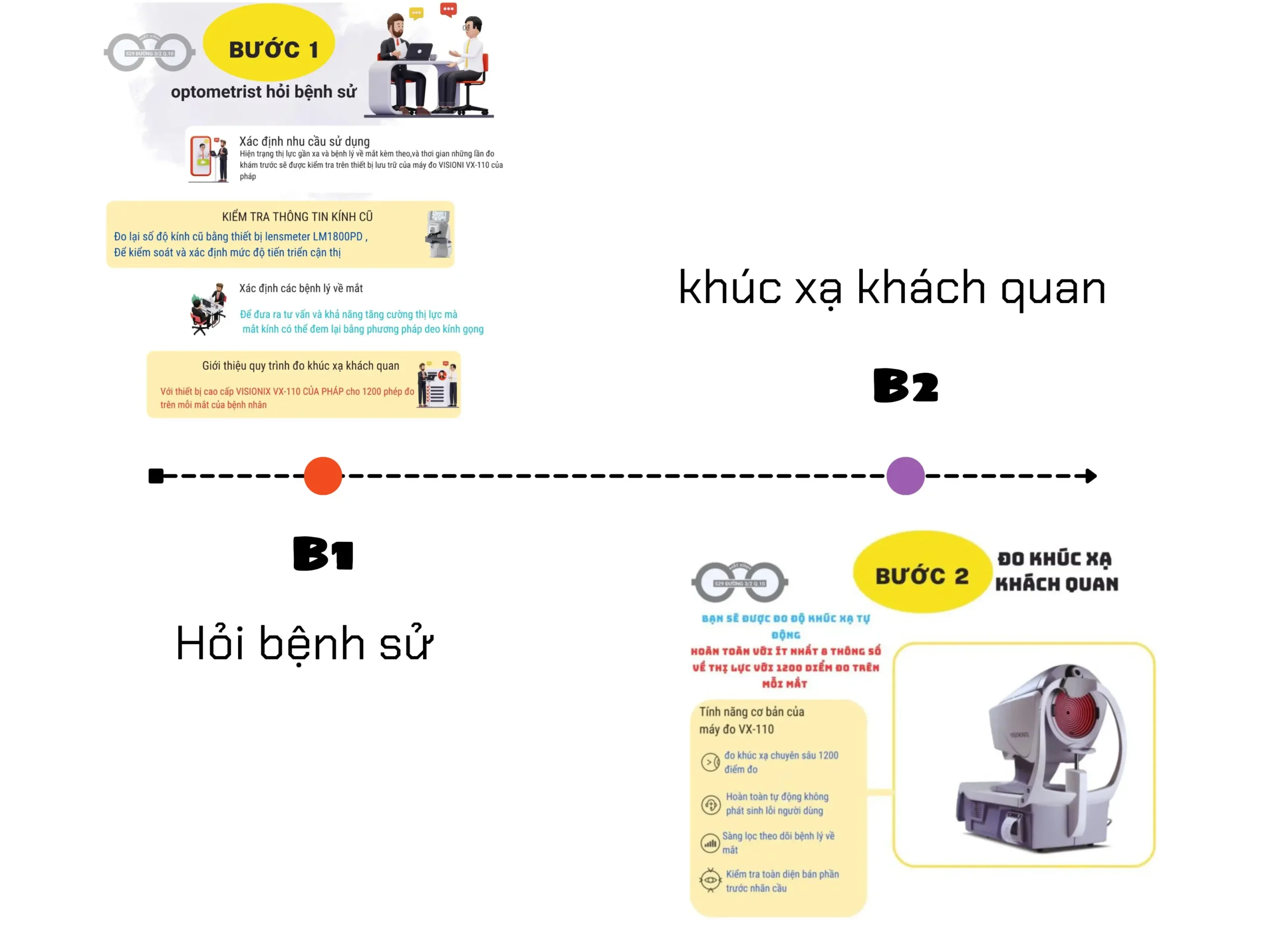
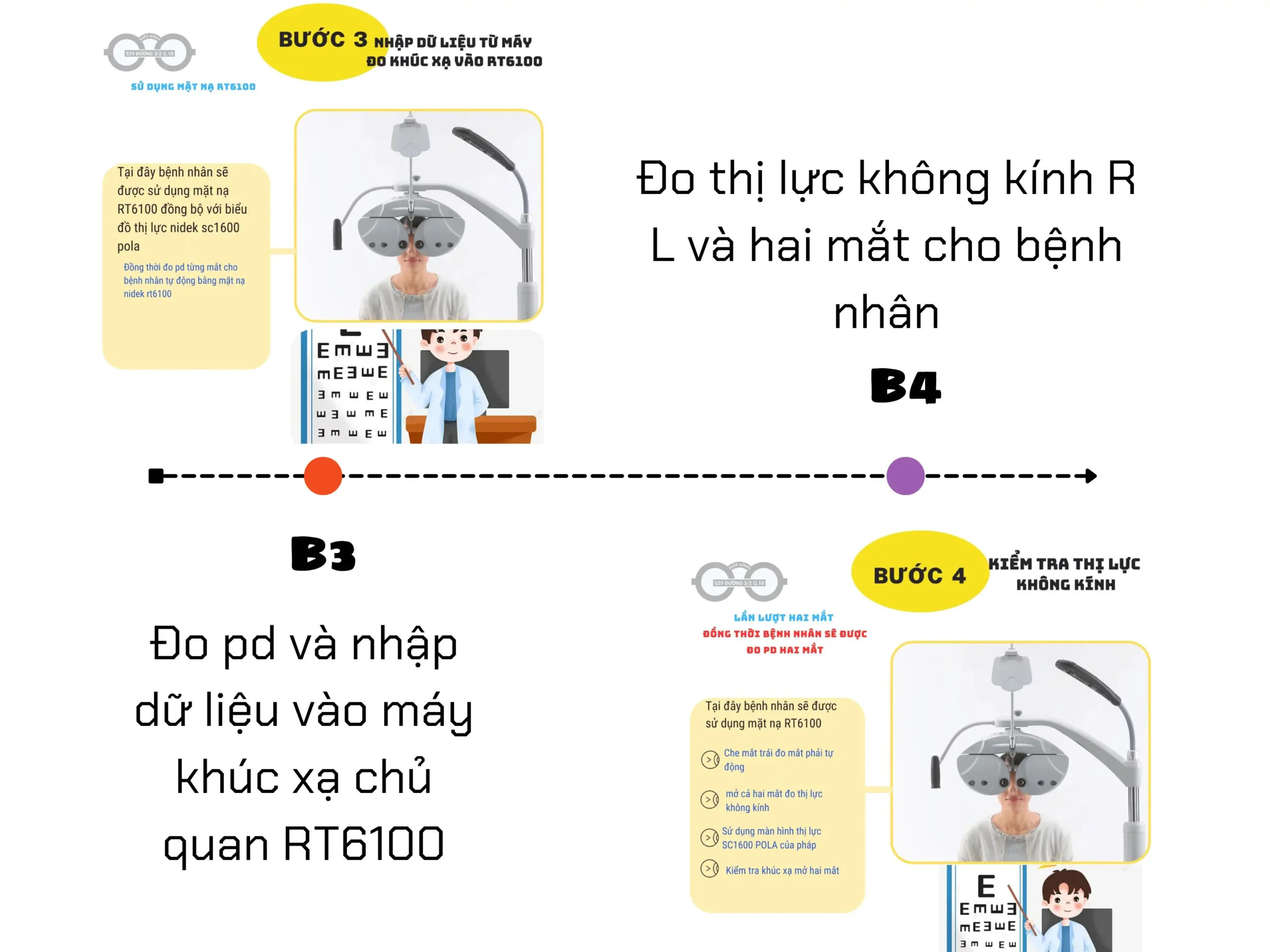
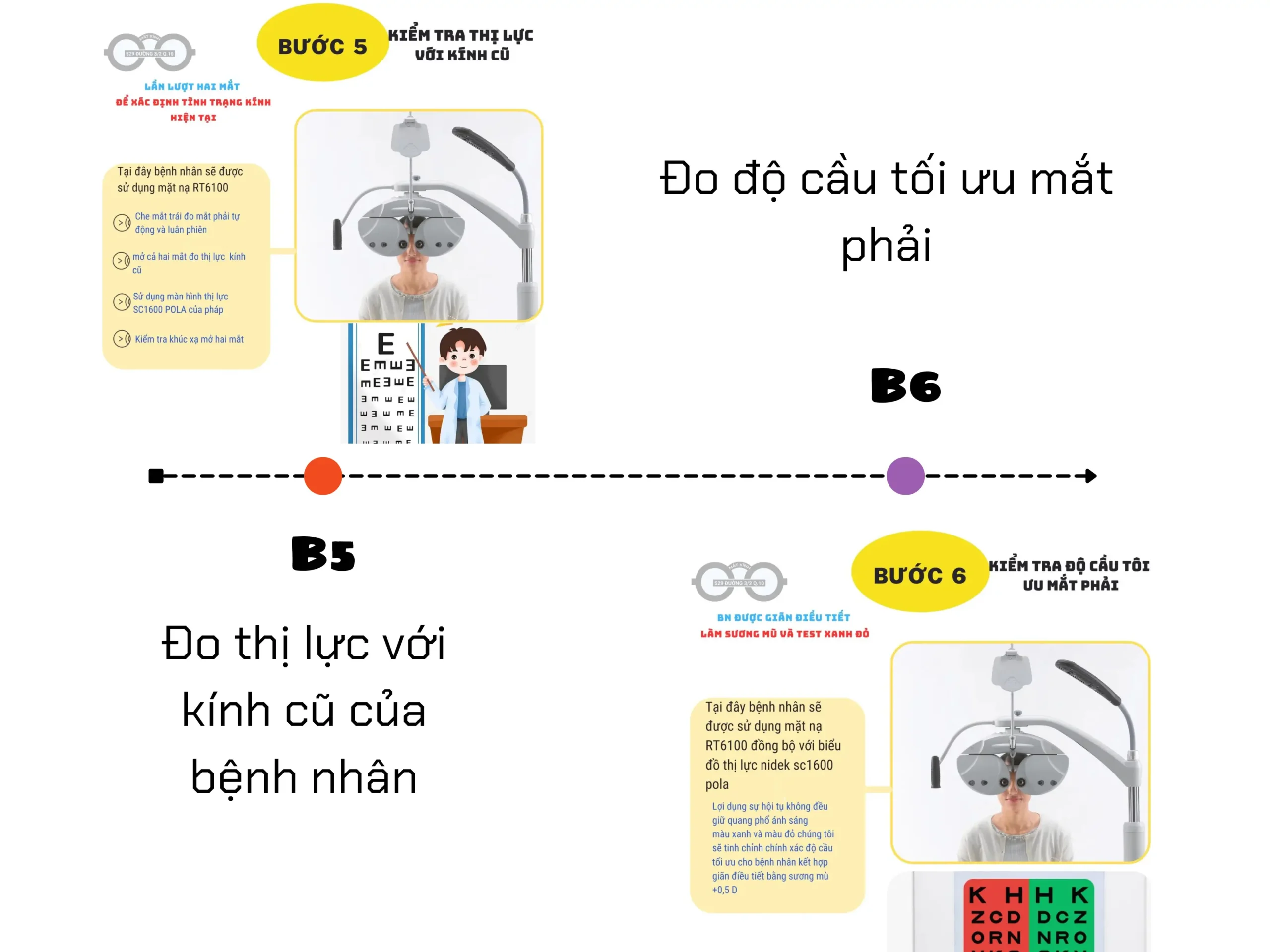


Medical history assessment helps you better understand the issues affecting your eyes and receive personalized consultation from our specialists.
This process takes approximately 5 minutes, depending on the individual, and is conducted one-on-one with a technician in a private exam room — allowing customers to feel more comfortable sharing and asking questions.
At Mat Kinh Dien Bien Phu, we take eye health evaluation very seriously.
We begin every exam with a thorough conversation and detailed analysis of your medical and visual history.
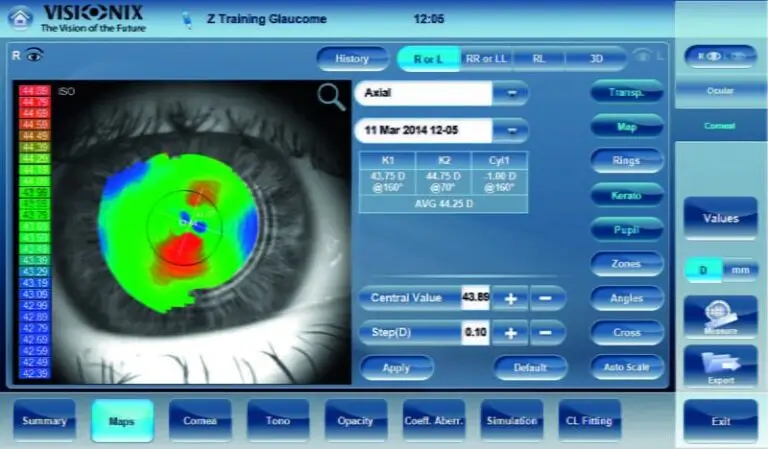
With our patented Powermap® Wavefront technology, the VX110 not only measures both higher-order and lower-order aberrations, but when combined with patient vision simulation, it allows you to show them exactly how much their vision can be improved with the right lenses.
We import data from the Visionix VX110 objective refraction system and the Nidek LM1800 lensmeter (including PD) into the RT6100 subjective refraction device.
The pupillary distance (distance between the centers of the pupils) must precisely align with the optical center of the lenses to ensure that light passes through and focuses correctly on the retina — delivering clear, sharp vision. That’s why this PD measurement step is added as a critical part of the myopia testing process, helping minimize discomfort such as dizziness or visual distortion when using new glasses.
This step prepares the patient for the subjective refraction process using the advanced RT6100 system.
For individuals with normal (emmetropic) vision, uncorrected visual acuity will typically be 10/10. A result below 8/10 may indicate potential issues and should be followed by further testing — especially if any of the following signs are present:
Blurred or hazy vision:
This is a strong sign that you should have an eye exam immediately. It may signal refractive errors or vision deterioration.Squinting to see clearly:
People with vision problems often squint to bring things into focus. When light entering the retina is scattered unevenly, squinting reduces the entry area and helps concentrate the image.Difficulty seeing at night:
Night vision problems may indicate multiple types of visual impairment. Low light makes it harder to distinguish object details.Light sensitivity:
A clear warning sign that you should get your eyes checked — immediately. Whether it’s a free or paid eye exam, don’t delay. This may indicate worsening eyesight or, in serious cases, sudden vision loss.
To assess whether the patient’s myopia has progressed, the current glasses prescription is no longer accurate, the lenses are scratched or damaged, or there was an error in previous lens fitting — we proceed to the next step: measuring the current prescription.
After determining the basic prescription, the Nidek RT6100 – our most advanced phoropter – performs a comprehensive visual assessment, including distance and near vision, accommodation ability, and more.
The measurements obtained with the RT6100 serve as a critical foundation for the optometrist to make an accurate diagnosis and develop a personalized vision correction plan.
At Mat Kinh Dien Bien Phu, our technician uses a series of test lenses to determine your precise visual clarity and the maximum difference in correction between both eyes. This also helps establish key parameters for the next steps in the eye exam.
This stage involves determining the astigmatism axis and cylinder power to optimize visual clarity and reduce eye strain and headaches caused by over-accommodation.
Starting from Step 7, the refraction process uses the system to evaluate astigmatism and refine the spherical power accordingly — ensuring that the final prescription is highly accurate and tailored to the patient’s exact refractive needs.
Measure the optimal spherical power for the left eye, then refine astigmatism correction and axis alignment just like with the right eye.
Balancing visual acuity between both eyes helps prevent strabismus (eye misalignment) in cases of refractive imbalance (e.g., -3.00D in the right eye, -1.00D in the left).
Early vision balancing through properly prescribed glasses ensures stable and healthy visual development — especially for children.
Similar to Step 8, the technician uses an automated system to assess binocular vision and optimize the customer’s overall clarity.
Measuring the near addition (Add) helps optimize multiple vision zones, providing the most comfortable and effective eyewear experience for all daily activities.
This step is designed for customers experiencing near vision problems, such as blurry text when reading books or newspapers.
After determining the current prescription, the customer will try on a pair of trial glasses fitted with the appropriate lenses to assess real-world distance vision.
If symptoms such as dizziness or discomfort occur, the prescription will be fine-tuned to ensure the most stable and comfortable vision.
This is the final step in the myopia examination process, allowing the optician to comprehensively evaluate the accuracy and comfort of the result.
Eyeruler-2 (Essilor): A modern and comprehensive fitting device capable of delivering complete FIT parameters for both single vision and progressive lenses.
This device provides key personalized measurements, including:
PD (Pupillary Distance): Distance between pupils
FH (Fitting Height): Distance from the eye center to the bottom of the frame
Vertex Distance: Distance from the back of the lens to the corneal plane
Pantoscopic Tilt: Vertical tilt angle of the frame
Wrap Angle: Horizontal wrap-around angle of the frame
DBL (Distance Between Lenses): Bridge width
ELD (Eye–Lens Distance): Distance from the pupil to the back surface of the lens
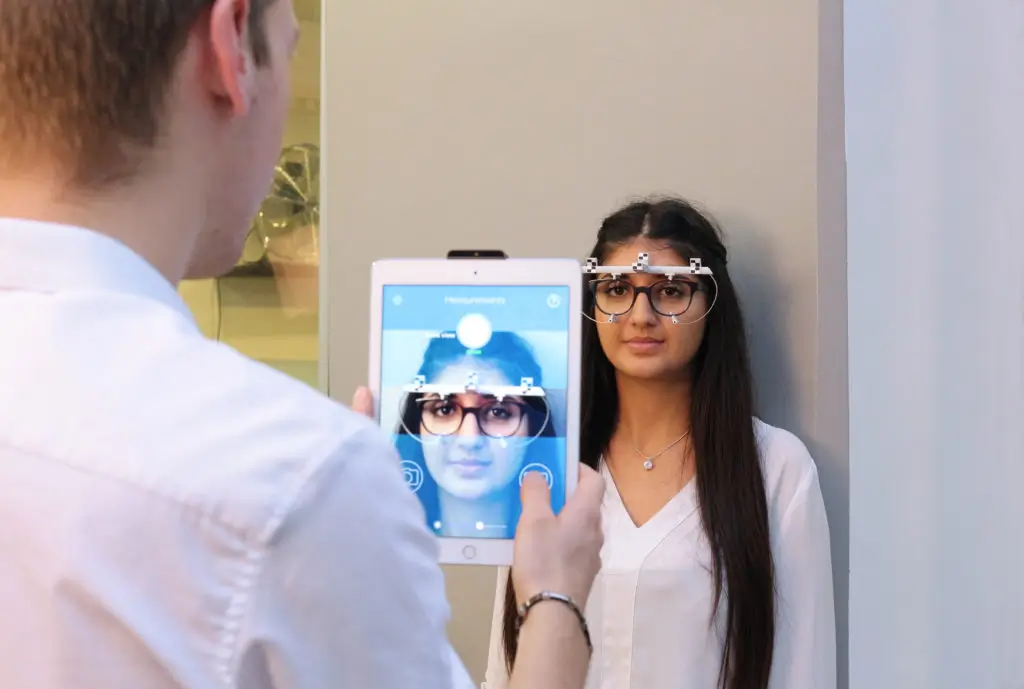

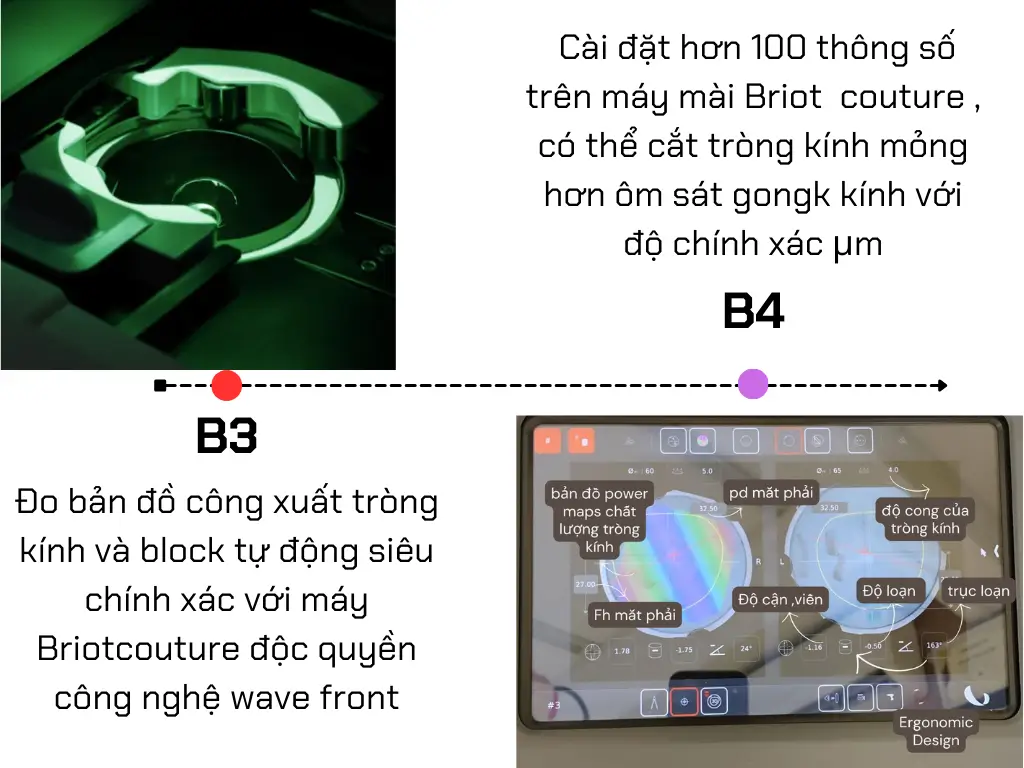

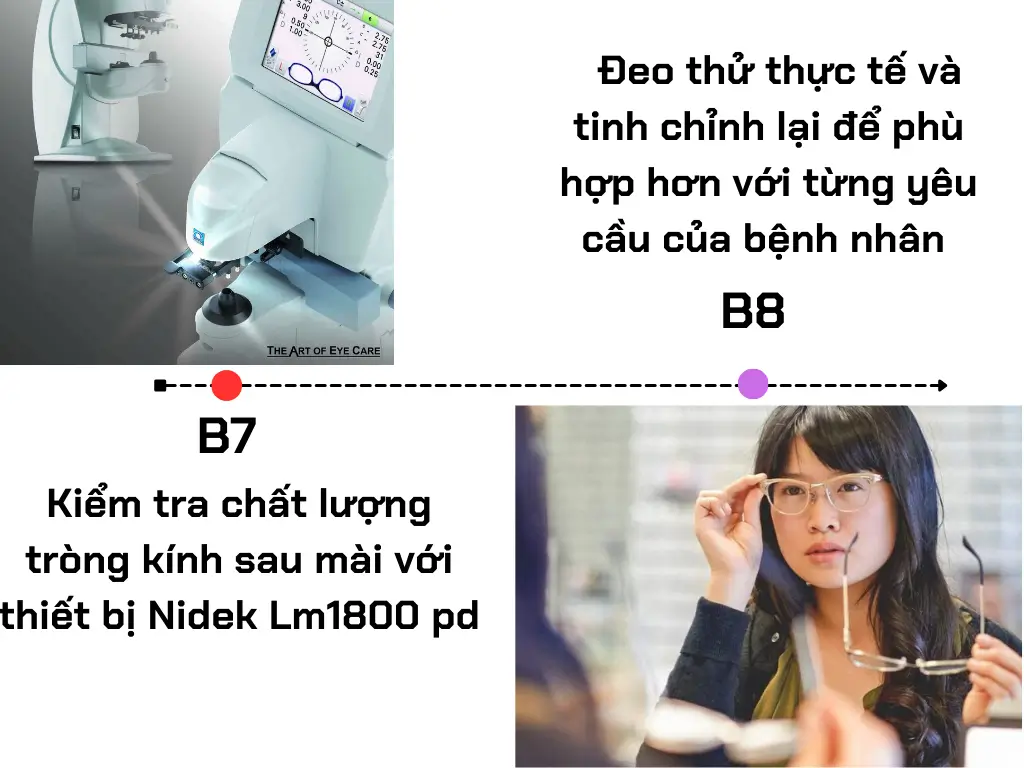
6
Month
6-month free replacement to single vision lenses if you’re unable to adapt to progressive lenses.
12
Month
We offer free repair service for any manufacturing defects in your glasses within one year from the date of purchase.
12
Month
We offer lens replacement under warranty for peeling or coating defects. Scratched lenses are not covered.
At Mat Kinh Dien Bien Phu, service quality and staff expertise are always our top priorities.
To ensure high professional standards—especially among our refraction technicians—all of our technicians are trained and certified by the Hanoi Medical Equipment Technical School.
Our team of refraction specialists is equipped with:
Comprehensive knowledge of eye anatomy, eye conditions, and methods of correcting refractive errors
Strong communication and consultation skills to help customers achieve their best possible vision
Proficiency in using modern and advanced optical instruments
You can rest assured of the professional qualifications of our technicians.
And best of all — eye exams at Mat Kinh Dien Bien Phu are completely free of charge.
Blurred or hazy vision:
This is a clear sign that you should get your eyes checked immediately. It may indicate vision deterioration, often caused by refractive errors.Squinting to see clearly:
People with vision issues tend to squint to focus. This helps reduce the entry area of scattered light and improve clarity on the retina.Difficulty seeing at night:
Struggling to see in low light can signal several vision problems, especially with contrast or detail recognition.Light sensitivity in nearsighted eyes:
If your eyes are unusually sensitive to light, get tested immediately — whether it’s a free or paid exam. It could signal worsening vision or even sudden vision loss.No eye exam in the past 6 months:
Skipping regular eye exams every 6 months may lead to undetected visual or ocular health issues.
Client Gallery
Thank you for your trust and support

